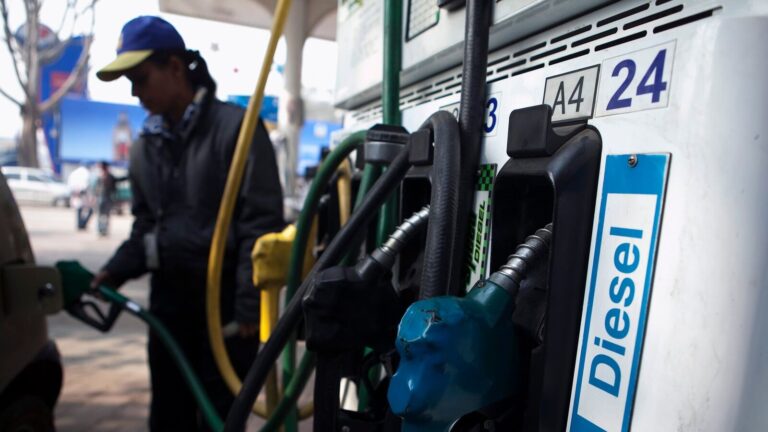Valued at about $8 billion, the case is among the largest consumer suits in UK history and is expected to conclude by mid-2026. Its outcome could shape how regulators worldwide design and enforce emission and efficiency standards—just as India prepares to roll out its next phase of fuel-efficiency rules from April 2027.
The UK proceedings also highlight why disclosure standards matter for policymakers. The lawsuit isn’t just about diesel engines; it’s about whether regulators can compel transparency from global automakers. Mint looks at how the UK court has approached the issue—and what lessons it may hold for India’s policy shift.
How did the UK dispute begin?
In October, around 1.6 million car owners told London’s High Court that vehicles sold between 2012 and 2017 by these automakers contained defeat devices that masked nitrogen oxide (NOx) emissions during tests. Once on the road, however, the same cars allegedly emitted as much as 12 times the legal limit, Reuters reported.
The trial will first determine whether such devices existed. If the court rules in favour of car owners, a second trial will decide compensation. So far, the case covers 20 models from the five manufacturers and may later extend to vehicles from Stellantis-owned Vauxhall and BMW.
A decade after Volkswagen’s Dieselgate
Volkswagen’s 2015 scandal remains one of the costliest corporate crises in automotive history. In 2020, the same London High Court found VW liable for using defeat devices to flout emission norms. The company has since paid about $37 billion in refits, fines and legal costs, while its former chief executive officer Martin Winterkorn faced criminal charges.
The current UK case, involving multiple manufacturers, is being watched closely for whether the alleged violations were systemic or limited to individual models, and how regulators respond this time.
India’s own fuel-efficiency rules under scrutiny
India’s proposed corporate average fuel efficiency (CAFE) rules, notified in draft form about a month ago, place carbon emissions at the core of how fuel efficiency will be measured.
Set to take effect in April 2027 for five years before being tightened further till 2032, the rules aim to make vehicles more fuel-efficient by directly linking mileage to carbon dioxide emissions—lower emissions per kilometre will translate to higher fuel efficiency.
The proposed rules carry particular weight for India, now the world’s third-largest automobile market after the US and China. Policymakers also see them as a lever to push manufacturers towards cleaner technologies such as hybrid and electric vehicles.
But the transition isn’t smooth. Automakers are divided over whether small cars should receive special treatment under the regulation, among other industry demands that the government has not fully accommodated. As Mint recently reported, nearly every carmaker has raised concerns with the draft Cafe rules.
How ‘Dieselgate 2’ is unfolding
The automakers named in the case have sought to distance themselves from Volkswagen’s 2015 scandal, insisting that the current claims are unrelated. They argue the allegations are “fundamentally flawed,” saying emission-control systems behave differently under varying driving conditions and cannot be compared to the software at the heart of the original Dieselgate episode.
Yet at the core of the dispute lies an issue that extends beyond engineering—proprietary information.
Court documents dated 25 July, reviewed by Mint, show that much of the High Court’s deliberation has revolved around how much internal data carmakers must disclose. Manufacturers have resisted releasing technical details they say could benefit competitors, while claimants have pushed for full transparency. They have also asked for the removal of redactions from pleadings and witness statements that defendants marked as confidential.
“The criticism flows both ways,” the 25 July judgment noted. Automakers warned that sharing confidential data with claimant groups already poses risks to their intellectual property, while claimants accused them of using secrecy on a massive scale to obstruct justice.
To navigate this standoff, the court has adopted a tiered documentation system at the carmakers’ request. Green documents are unredacted and open to the public. Amber documents carry partial redactions and limited disclosure. Red documents remain strictly confidential, viewable only in court and in the presence of lawyers.
Mercedes-Benz has asked that all technical parameters and values be classified as Red, while other carmakers have sought Amber classification.
At the centre of this debate is the UK’s long-standing legal principle of “open justice.” The court has cited the 1913 Scott vs Scott case, in which the House of Lords drew upon philosopher Jeremy Bentham’s dictum: Publicity is the very soul of justice.
The larger takeaway
The “Dieselgate 2″ proceedings go beyond emissions—they reflect a deeper conflict between corporate secrecy, consumer rights, and regulatory transparency. As India finalizes its own fuel-efficiency regime, the UK case offers a timely reminder: clean mobility goals can’t rest on technology alone. They depend just as much on how openly automakers are willing to account for what happens under the hood.
Images are for reference only.Images and contents gathered automatic from google or 3rd party sources.All rights on the images and contents are with their legal original owners.

